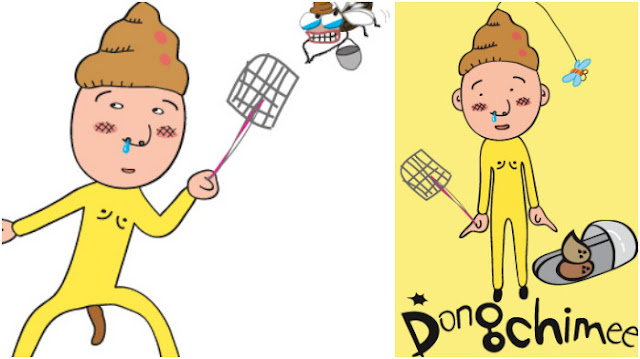Located at the western end of the Cheonggyechon, a restored stream that had been buried under concrete slabs for years, “Spring,” a sculpture by Claes Oldenburg and his wife, Coosje van Bruggen, has stood tall since it was installed in 2006.
 |
| Photo |
The 20-meter-high (65.6 foot) spiral cone painted in red and blue resembles the shape of a black snail, which the Swedish artists claim is used as a symbol of renewal in nature.
But the symbol which has represented the renewal of one of Seoul’s most frequented areas will soon take on a new meaning.
On April 1, the Seoul Metropolitan Government, announced that it will paint the statue various shades of brown to better emulate a giant swirl of ddong.
The statue will become illuminated by small yellow bulbs daily at sunset, while a life-size statue of Dongchimee, a poop-adorned character who enjoys sticking his fingers in others’ bums (the Korean equivalent of a wet willy), will be sculpted and placed in front of the updated installation.
 |
| Image |
Poop has long played an important role in Korean culture, and the popular image of the swirly mound type was made famous circa the 1970s.
Old Korean superstitions state that one will be prosperous if he or she dreams of poo; these days, it’s not uncommon for the superstitious types to load up on lottery tickets after having such dreams. Moreover, golden-hued droppings remain representative of wealth and good fortune.
The changes are expected to be made…
PROBABLY NEVER.
Happy April Fools’ Day, Seoul Searchers!
Disclaimer: This news is completely fictional. Seoul is not changing it’s Cheonggyechon snail sculpture (or any of its other works of art, for that matter) into poo.



